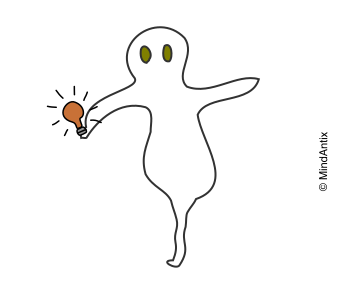From the earliest times people have been fascinated with creators and what leads them to make an original piece of work. Almost all cultures predating middle ages including Greek, Judaic and Hinduism, held the belief that a higher spirit or power gave “inspiration” or even full formed ideas directly to these creative geniuses. In fact, the word genius literally means a guardian spirit that guides and directs an individual. For obvious reasons then, creative people were held in high esteem as they seemed to have special access to higher forms of power.
We now know that creativity has nothing to do with divine intervention, and a lot to do with the environment, personality and individual creative thinking abilities. And that everyone can learn to be more creative than they are. What we don’t know that well is whether creative thinking is a general skill that can be used in many different contexts or does it work in only one area. In other words, can a creative writer also be a creative product designer?
This question has led to some vigorous debate in the scientific community. For a while the scale seemed to tip towards a domain-specific view of creativity. A study conducted on 8th grade students who were asked to create a poem, a story, a mathematical word problem and an interesting equation, found low intercorrelations between the creativity ratings of different artifacts. Another study on undergraduate students, who had complete tasks in structure building, collage making and poetry writing, showed similarly low intercorrelations.
On the other hand, a large body of research has found that cognitive abilities for both creativity and general problem solving are applicable across domains. A reason that creativity looks domain-specific is that big accomplishments take many years, forcing people to choose domain specificity. So the consensus now seems to be that there are both domain-general and domain-specific aspects of creativity.
In our experience with students so far, we find that some of the cognitive processes used in creative problem solving show the domain-general nature of creativity. For example, our students have used associative thinking in coming up with novel product ideas as well as in producing creative stories.
However, there are some cognitive processes that seem to play a larger role in specific domains. For instance, analogical thinking seems to play a larger role in scientific creativity. That doesn’t mean that other kinds of thinking are not useful or haven’t been used in scientific breakthroughs, it’s just that analogical thinking leads to more “successes” (in terms of coming up with ideas that are both novel and useful) in science.
As we reflected on the work we have done so far, we have come to believe that regardless of the final outcome of the domain specific/general debate, we need to focus on strengthening the underlying cognitive processes used in both creative and critical thinking. And we need to do this in both domain-general and in domain-specific ways. If it does turn out that creativity is predominantly domain general, doing domain-specific tasks is still going to be helpful.
Our work so far has focused primarily on building general cognitive skills. But as we start next year, we’ll be working more on creativity in specific domains like literature, math or science. We hope to build up creativity focused content in the Common Core, which there isn’t enough of, and help improve student creative problem solving abilities in both general and specific ways.

